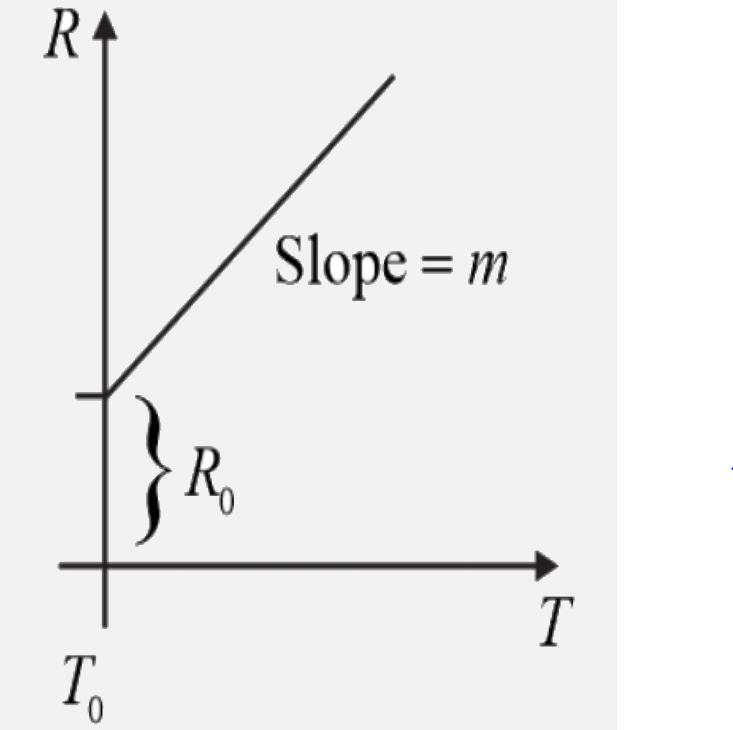The difference in the variation of resistance with temperature in a metal and a semiconductor arises essentially due to the difference in the
crystal structure
change in the number of charge career
type of bonding
none of these
The correct Answer is:B
To solve the question regarding the difference in the variation of resistance with temperature in metals and semiconductors, we can break it down step by step.
Step 1: Understand the Concept of Resistance
Resistance in a material is influenced by the movement of charge carriers (electrons in metals and holes/electrons in semiconductors). As temperature changes, the behavior of these charge carriers also changes.
Hint: Recall that resistance is related to how easily charge carriers can move through a material.
Step 2: Analyze Metals
In metals, as the temperature increases, the lattice structure of the metal atoms vibrates more vigorously. This increased vibration leads to more frequent collisions between the charge carriers (electrons) and the vibrating atoms, which results in an increase in resistance.
Hint: Think about how increased atomic vibrations affect electron movement in metals.
Step 3: Analyze Semiconductors
In semiconductors, the situation is different. As temperature increases, more electrons gain enough energy to jump from the valence band to the conduction band, thereby increasing the number of charge carriers (both electrons and holes). This increase in charge carriers leads to a decrease in resistance.
Hint: Consider how the energy levels in semiconductors allow for more charge carriers at higher temperatures.
Step 4: Compare the Two
The key difference in the variation of resistance with temperature between metals and semiconductors is due to the change in the number of charge carriers. In metals, resistance increases with temperature due to increased collisions. In semiconductors, resistance decreases with temperature due to an increase in the number of charge carriers.
Hint: Focus on how the behavior of charge carriers in both materials changes with temperature.
Step 5: Conclusion
Thus, the difference in the variation of resistance with temperature in a metal and a semiconductor arises essentially due to the difference in the change in the number of charge carriers with temperature.
Final Answer
The answer is: Change in the number of charge carriers.
---
Resistance in a material is influenced by the movement of charge carriers (electrons in metals and holes/electrons in semiconductors). As temperature changes, the behavior of these charge carriers also changes.
In metals, as the temperature increases, the lattice structure of the metal atoms vibrates more vigorously. This increased vibration leads to more frequent collisions between the charge carriers (electrons) and the vibrating atoms, which results in an increase in resistance.
In semiconductors, the situation is different. As temperature increases, more electrons gain enough energy to jump from the valence band to the conduction band, thereby increasing the number of charge carriers (both electrons and holes). This increase in charge carriers leads to a decrease in resistance.
The key difference in the variation of resistance with temperature between metals and semiconductors is due to the change in the number of charge carriers. In metals, resistance increases with temperature due to increased collisions. In semiconductors, resistance decreases with temperature due to an increase in the number of charge carriers.
Thus, the difference in the variation of resistance with temperature in a metal and a semiconductor arises essentially due to the difference in the change in the number of charge carriers with temperature.
The answer is: Change in the number of charge carriers.
Topper's Solved these Questions
- BOOK - RESONANCE ENGLISHCHAPTER - SEMICONDUCTORSEXERCISE - Exercise 216videos
SEMICONDUCTORS
- BOOK - RESONANCE ENGLISHCHAPTER - REVISION DPPEXERCISE - All Questions463videos
REVISION DPP
- BOOK - RESONANCE ENGLISHCHAPTER - SIMPLE HARMONIC MOTION EXERCISE - Advanced Level Problems13videos
SIMPLE HARMONIC MOTION
Similar Questions
Show on a graph, the variation of resistivity with temperature for a typical semiconductor.
View SolutionDefine resistivity of a conductor. Plot a graph showing the variation of resistivity with temperature for a metallic conductor. How does one explain such a behaviour, using the mathematical expression of the resistivity of a material
View SolutionWrite down a simple relationship to show the varriation of resistance with temperature. Define temperature coefficient of resistance. In what way the temperature coffecient of carbon is different from that of the common conductors ?
View Solutionheat flows between two bodies due to difference in their
View SolutionBy increasing the temperature , the specific resistance of a conductor and a semiconductor
View SolutionThe difference in characters among same progeny is due to
View SolutionVariation of resistance of the conductor with temperature is shown . Temperature coefficient of the conductor is
 View Solution
View SolutionA constant potential difference is applied across a resistance. Consider variation of resistance with temperature. Which graph represents best the variation of power produced in resistance versus resistance?
View SolutionThe resistance of a metallic conductor increases with temperature due to.
View SolutionWrite the difference between heat and temperature .
View Solution

